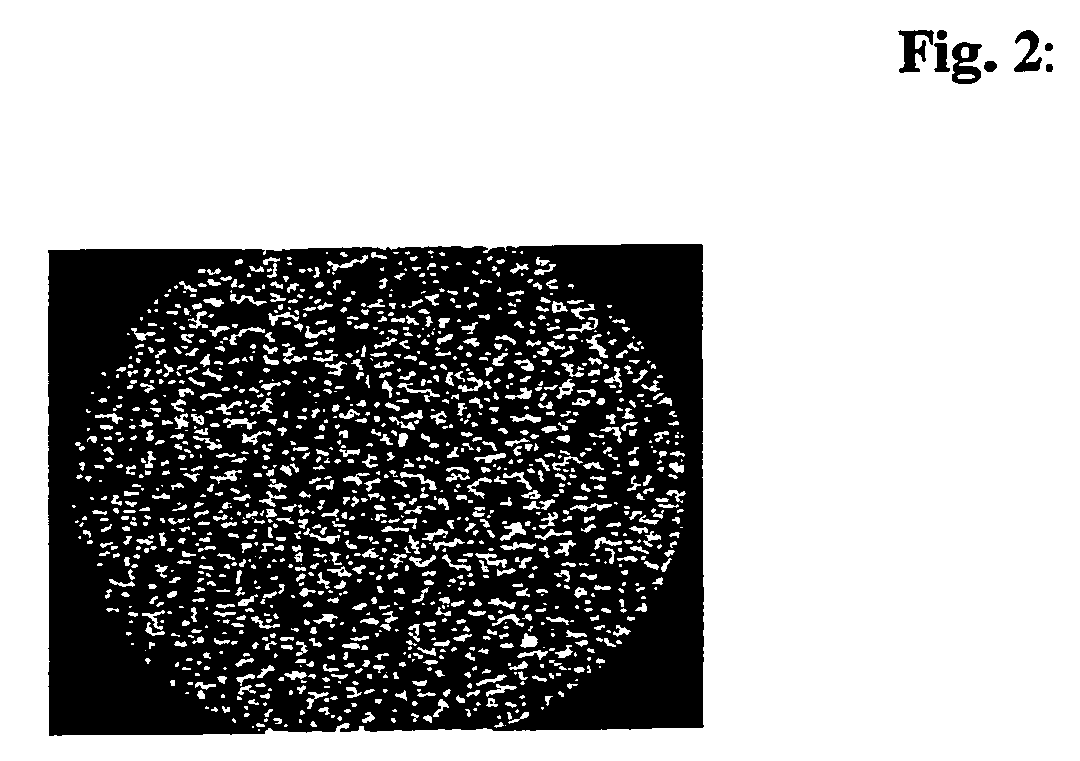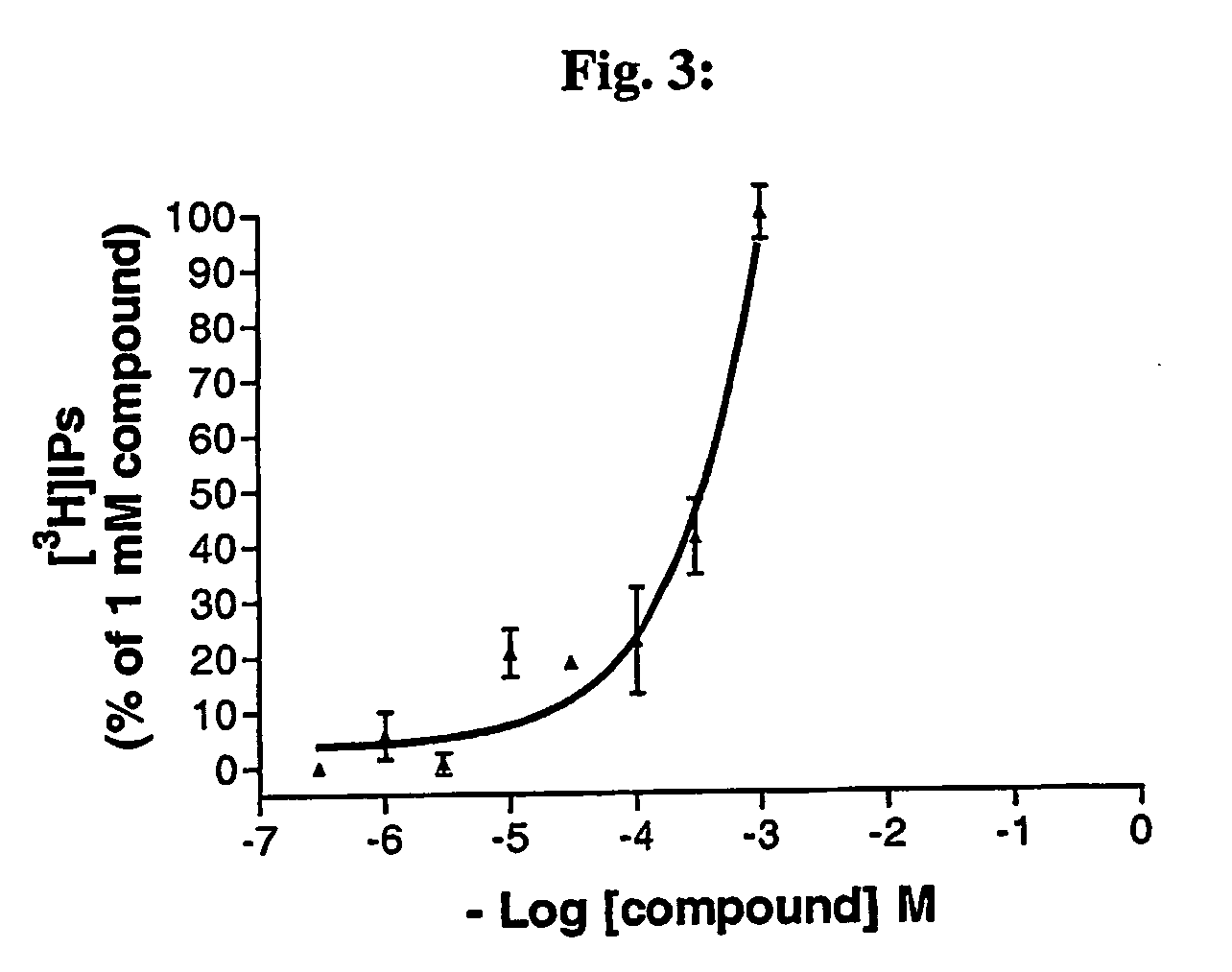Matrix analysis of gene expression in cells (magec)
a cell and matrix analysis technology, applied in the field of new assays, can solve the problems of low throughput of analyzing gene function methods, insufficient sequence information alone to infer the function of a given gene, and low efficiency of gene expression analysis methods
- Summary
- Abstract
- Description
- Claims
- Application Information
AI Technical Summary
Benefits of technology
Problems solved by technology
Method used
Image
Examples
embodiment
DNA / Lipid Embodiment
[0093] In the second embodiment, a mixture comprising a heterologous nucleic acid, (e.g. DNA contained in an expression vector) in an appropriate transfection enhancing buffer with an adherence-promoting polymer (e.g., polyvinyl alcohol); and a lipid-based transfection reagent is applied onto a surface, such as a glass slide, in indexed locations and allowed to dry. Thereafter, actively growing cells are plated on top of the nucleic acid-containing locations and the resulting surface is maintained under conditions (e.g., temperature and time) favoring entry of the nucleic acid contained in the nucleic acid-containing markings into the growing cells. The uptake and subsequent expression of the DNA in cells can be detected using known methods In an alternative format the surface is a well of a multi-well plate. Herein, the addition of an adherence-promoting polymer is not essential for efficient transfection. However, the addition of adherence reagents can promote ...
example 1
Plate-based, Polyethylenimine (PEI) / DNA Embodiment
Overview of MAGEC Plate-Based, PEI Transfection Protocol: Assay as Written is for a 24-well Tissue Culture Assay Format)
[0241] Overview: The target nucleic acid is mixed with a linear polyethylenimine reagent and an adherence-promoting polymer such as polyvinyl alcohol, glycogen or methylcellulose. The adherence-promoting polymer, as the name implies, promotes adherence of the PEI / nucleic acid complex to the surface of the multi-well plate. The coated plates are incubated overnight at 4° C. and subsequently dried in vacuo. The plates are then seeded with a cell type of interest to initiate transfection.
Detailed Protocol:
[0242] 1. In a 1.5 ml tube, add 0.5-4 μg DNA to 50 μl of transfection-enhancing buffer (i.e., EC buffer Qiagen) containing 0.3M sucrose and mix. [0243] 2. In another 1.5 ml tube, add 13 μl PEI (ExGen 500 MBI Fermentas) to 50 μl of NaCl (150 mM) mix. [0244] 3. Add the PEI / NaCl reagent to the nucleic acid contain...
example 2
Slide-based, Lipid / DNA Embodiment
Overview of MAGEC Slide-based, Lipid Transfection Protocol:
[0253] The nucleic acid of interest is mixed with a lipid-based transfection reagent and an adherence-promoting, non-proteinaceous polymer, such as polyvinyl alcohol (PVA) that promotes adherence to the surface of the glass slide. The mixture is subsequently deposited on the slide and allowed to dry. The printed slides are placed in a culture dish and the cell type of interest is plated over the slides to initiate transfection. [0254] 1. 0.8-1.6 μg of target DNA is mixed with about 15 μl transfection-enhancing buffer (i.e., EC buffer Qiagen) containing 0.3M sucrose. [0255] 2. 1.5 μl enhancer reagent (QIAGEN) is then added and the mixed by pipetting and then allowed to sit at room temperature for 5 minutes. [0256] 3. Transfection Reagent: About 5 μl of lipid reagent (Effectene QIAGEN) is added to the mixture obtained in 2) above. The resulting lipid-DNA mixture is then gently vortexed and ...
PUM
| Property | Measurement | Unit |
|---|---|---|
| diameter | aaaaa | aaaaa |
| temperature | aaaaa | aaaaa |
| concentration | aaaaa | aaaaa |
Abstract
Description
Claims
Application Information
 Login to View More
Login to View More - R&D
- Intellectual Property
- Life Sciences
- Materials
- Tech Scout
- Unparalleled Data Quality
- Higher Quality Content
- 60% Fewer Hallucinations
Browse by: Latest US Patents, China's latest patents, Technical Efficacy Thesaurus, Application Domain, Technology Topic, Popular Technical Reports.
© 2025 PatSnap. All rights reserved.Legal|Privacy policy|Modern Slavery Act Transparency Statement|Sitemap|About US| Contact US: help@patsnap.com



